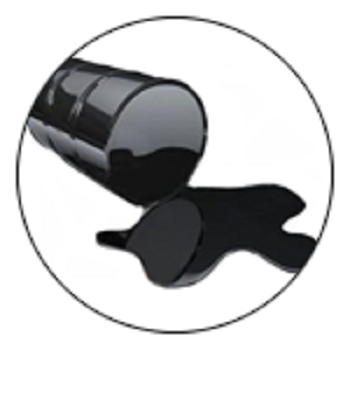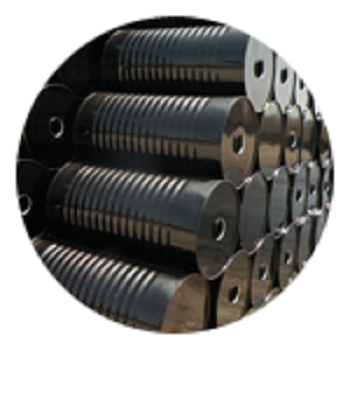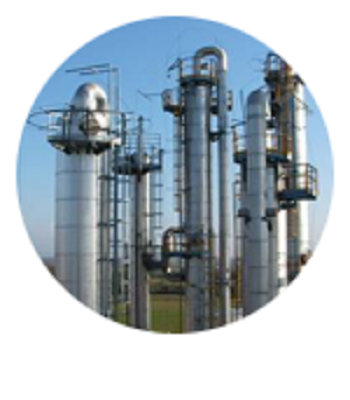CUTBACK MC250-Cutback bitumen
0,00 €Bitumen is ‘cutback’ by adding controlled amounts of petroleum distillates such as kerosene. This is done to reduce the viscosity of the bitumen temporarily so it can penetrate pavements more effectively or to allow spraying at temperatures that are too cold for successful sprayed sealing with neat bitumen.
CUTBACK MC250-Cutback bitumen
0,00 €Bitumen is “cutback” by adding controlled amounts of petroleum distillates, such as kerosene. Type and quality of Cutback depends on type and amount of solvent in the pure bitumen. The more solvent in Cutback bitumen, leads to the more viscosity in bitumen. Cutback bitumen is used when there is limited access to heating equipment, bitumen decomposition in high temperature, bitumen cooling throughout working, workers safety, fire and time consuming. This type of bitumen is used in road operations for surfacing and pavement. Medium-Curing (MC) bitumen is achieved from solving pure bitumen into kerosene.
Cutback bitumen is classified based on viscosity grade. It is divided into three categories:
Rapid-Curing (RC)
The cutback bitumen is known as rapid-curing (RC) if the bitumen is solved in gasoline. The reason is that evaporation occurs quickly and the bitumen is deposited. RC cutbacks are divided into RC250, RC70, RC800 and RC3000 categories. The numbers indicate the viscosity of bitumen. Naphtha could be mixed with bitumen 80/100 for more dilution.
Medium-Curing (MC)
MC cutbacks are prepared by solving bitumen in kerosene which evaporates more slowly than gasoline. MC cutbacks are divided into five groups with their viscosity varying from 3-4 to 6,000 at 60 degrees Centigrade. This kind of bitumen may be achieved by solving bitumen 85/100 in Kerosene.
Slow-Curing (SC)
Slow-curing cutback may be achieved from solving bitumen in gasoil or fuel oil or directly from distillation of crude oil. SC cutbacks do not evaporate under normal weather conditions, but they gradually experience changes in their molecular form. This kind of bitumen is achieved from solving bitumen 85/100 in heavy solvent such as Gasoil or Fuel oil which will not only evaporate but also make it hard. Types of this kind of bitumen includes SC 70, SC 250, SC800 and SC 3000.
CUTBACK MC250-Cutback bitumen
0,00 €Bitumen is ‘cutback’ by adding controlled amounts of petroleum distillates such as kerosene. This is done to reduce the viscosity of the bitumen temporarily so it can penetrate pavements more effectively or to allow spraying at temperatures that are too cold for successful sprayed sealing with neat bitumen.
CUTBACK MC30-Cutback bitumen
0,00 €Bitumen is ‘cutback’ by adding controlled amounts of petroleum distillates such as kerosene. This is done to reduce the viscosity of the bitumen temporarily so it can penetrate pavements more effectively or to allow spraying at temperatures that are too cold for successful sprayed sealing with neat bitumen.
CUTBACK MC30-Cutback bitumen
0,00 €Bitumen is ‘cutback’ by adding controlled amounts of petroleum distillates such as kerosene. This is done to reduce the viscosity of the bitumen temporarily so it can penetrate pavements more effectively or to allow spraying at temperatures that are too cold for successful sprayed sealing with neat bitumen.
CUTBACK MC30-Cutback bitumen
0,00 €Bitumen is ‘cutback’ by adding controlled amounts of petroleum distillates such as kerosene. This is done to reduce the viscosity of the bitumen temporarily so it can penetrate pavements more effectively or to allow spraying at temperatures that are too cold for successful sprayed sealing with neat bitumen.
CUTBACK MC3000-Cutback bitumen
0,00 €Bitumen is ‘cutback’ by adding controlled amounts of petroleum distillates such as kerosene. This is done to reduce the viscosity of the bitumen temporarily so it can penetrate pavements more effectively or to allow spraying at temperatures that are too cold for successful sprayed sealing with neat bitumen.
CUTBACK MC3000-Cutback bitumen
0,00 €Bitumen is ‘cutback’ by adding controlled amounts of petroleum distillates such as kerosene. This is done to reduce the viscosity of the bitumen temporarily so it can penetrate pavements more effectively or to allow spraying at temperatures that are too cold for successful sprayed sealing with neat bitumen.
CUTBACK MC3000-Cutback bitumen
0,00 €Bitumen is ‘cutback’ by adding controlled amounts of petroleum distillates such as kerosene. This is done to reduce the viscosity of the bitumen temporarily so it can penetrate pavements more effectively or to allow spraying at temperatures that are too cold for successful sprayed sealing with neat bitumen.
CUTBACK MC70-Cutback bitumen
0,00 €Bitumen is ‘cutback’ by adding controlled amounts of petroleum distillates such as kerosene. This is done to reduce the viscosity of the bitumen temporarily so it can penetrate pavements more effectively or to allow spraying at temperatures that are too cold for successful sprayed sealing with neat bitumen.
CUTBACK MC70-Cutback bitumen
0,00 €Bitumen is ‘cutback’ by adding controlled amounts of petroleum distillates such as kerosene. This is done to reduce the viscosity of the bitumen temporarily so it can penetrate pavements more effectively or to allow spraying at temperatures that are too cold for successful sprayed sealing with neat bitumen.
CUTBACK MC70-Cutback bitumen
0,00 €Bitumen is ‘cutback’ by adding controlled amounts of petroleum distillates such as kerosene. This is done to reduce the viscosity of the bitumen temporarily so it can penetrate pavements more effectively or to allow spraying at temperatures that are too cold for successful sprayed sealing with neat bitumen.










